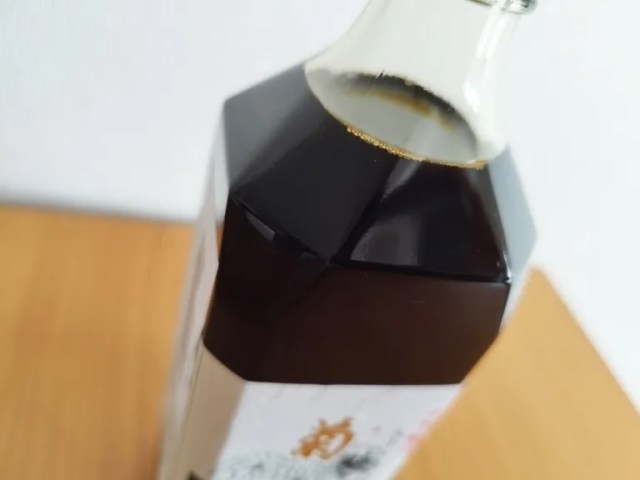
Seiji prepares to have his life changed by a Shikoku soy sauce.
Like most people born and raised in Japan, our reporter Seiji Nakazawa has been using soy sauce as a condiment for his whole life. So it definitely piqued his interest when he was browsing English-language Reddit and came across a thread where an American woman said she’d bought a new brand of say sauce and declared “I’m not exaggerating when I say that it is life changing!”
The woman even included a photo of the bottle. With its label written entirely in Japanese, Seiji was quickly able to see that it was a bottle of soy sauce made by Yamaroku, a soy sauce company on the island of Shodoshima in Kagawa Prefecture in Japan’s Shikoku region.
Seiji had never tried Yamaroku soy sauce, or, honestly, even heard of it. Doing a little research, though, he learned that the company has a history that goes back roughly a century and a half. If its soy sauce really has life-changing levels of deliciousness, it would stand to make an especially big difference in Seiji’s life, considering how much soy sauce he, like most Japanese people, consumes.
And so Seiji bought a bottle. To clarify, Seiji ordered a bottle of Kikubishio soy sauce, which has pictures of chrysanthemums (kiku in Japanese) and a black stripe on the bottom left part of the label. Yamaroku also has a soy sauce variety called Tsurubishio with cranes (tsuru) and a red stripe on the label, but Kikubishio is the one the Reddit poster said was life-changing, while a mistakenly purchased bottle of Tsurubishio “taste[d] like normal American-issued soy sauces.”
▼ The black stripe on the Kikubishio bottle
Kikubishio can be ordered online through Amazon (here) and Rakuten Japan (here), and with shipping the 500-mililiter (16.9-ounce) bottle came to about 2,600 yen (US$17.70), with the shippig being about 660 yen of that. Compared to a similar-sized bottle of regular Kikkoman, Japan’s most common brand of mass-market soy sauce, Kkubishio is about six to seven times more expensive, but hey, if it changed Seiji’s life, it’d be worth the extra cost.
Opening the bottle, he poured the Kikubishio into a soy sauce dish.
It seemed a touch more aromatic than the average soy sauce. Taking a taste, Seiji found the flavor to be good too, but not anywhere near what he’d call life-changing. “It pretty much tasted like, well, soy sauce,” he says.
But Seiji will be the first person to admit that he’s not a soy sauce sommelier, so next he decided to do a side-by-side tasting of Kikubishio and regular Kikkoman soy sauce.
Once again, he grabbed a soy sauce dish and poured in some Kikkoman, and was shocked to see…
…just how different the colors were between the two brands!
Placed next to each other, the Kikkoman was bright and warm in color, while the Kikubishio was darkly opaque. However, Seiji didn’t come away from this impressed by the visual density of the Kikubishio so much as by the clarity of the Kikkoman. Honestly, when Seiji imagines soy sauce in his mind’s eye, he pictures a dark hue like the Kikubishio, so his surprise was about how different from that the Kikkoman looks when they’re viewed simultaneously.
Checking their scents, the Kikubishio did indeed have a relatively more pronounced bouquet. Tasting each, he found the Kikubishio to have, by comparison, the more refined aftertaste, one which, if he had to liken it to something, Seiji would say reminded him of wine.
The key clause there, though, is “if he had to liken it to something.” Really, though, the difference in taste between the two was fairly small, and miniscule in comparison to their difference in color.
But now it was time for the main event. As we mentioned at the start of this article, soy sauce is a condiment. It’s not really something that’s meant to be tasted or consumed all by itself, so the only was to see if Kikubishio is truly life-changing would be to use it as intended, as a seasoning.
This was also a good excuse for Seiji to put some sushi on the company expense account.
Seiji decided to go with a maguro (tuna) takeout set from popular revolving sushi chain Sushiro. Sushiro really knows their stuff when it comes to tuna, but they’re still an affordable chain, enough so that Seiji is very familiar with how their sushi tastes, which would let him judge how life-changing the Kikubishio itself is.
So Seiji ate a piece of sushi with the Kikubishio…
…and then another with the Kikkoman.
Remember how he couldn’t tell much of a difference in flavor when he tried the soy sauces by themselves? Well, after trying them with sushi, Seiji says:
“I could taste even less difference between them.”
Again, Seiji isn’t at all saying that Kikubishio is bad. He’s just saying that, to his taste buds, the basic Kikkoman tastes just as good, and at a fraction of the cost.
Seiji couldn’t help feeling just a little sad that his life hadn’t been changed by the Kikubishio, and also couldn’t help wondering how it could have made such a huge impression on the Reddit thread starter. Then he remembered the woman’s comment about how it tasted so much better than “normal American-issued soy sauces.” Seiji isn’t familiar with what the soy sauce that’s readily available in the United States tastes likes, so maybe Kikubishio really is on another level of deliciousness by that standard. For him, though, it’s not hard, or expensive, to find soy sauce that tastes that good in Japan. So while this didn’t turn out to be a life-changing experience for him, it showed him that maybe, in terms of soy sauce, he’s already been living the good life all along.
Photos ©SoraNews24
● Want to hear about SoraNews24’s latest articles as soon as they’re published? Follow us on Facebook and Twitter!
[ Read in Japanese ]